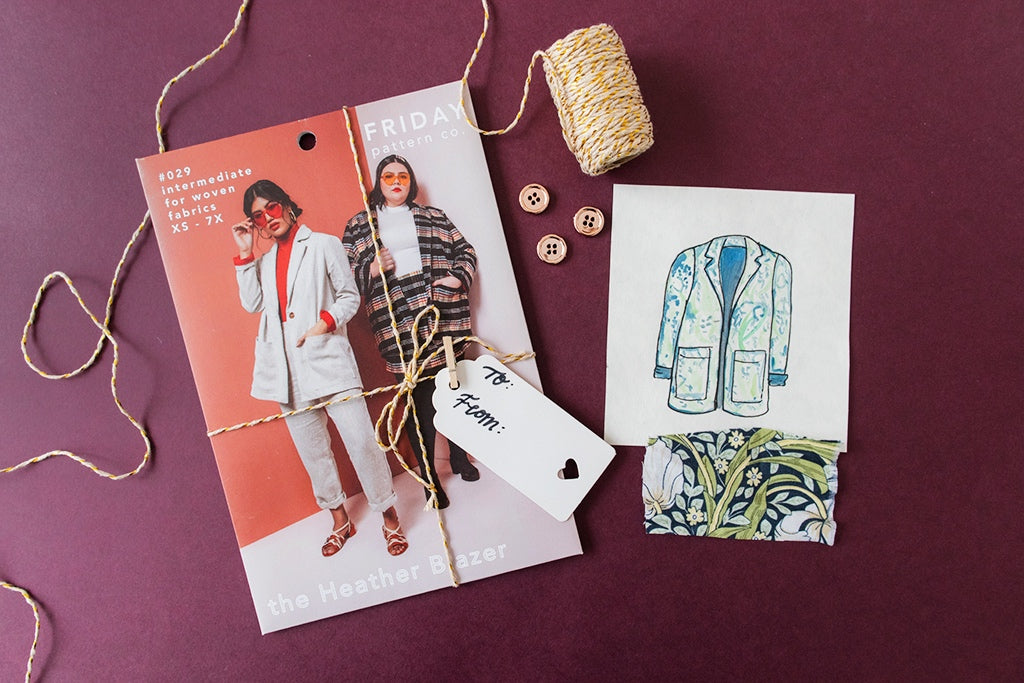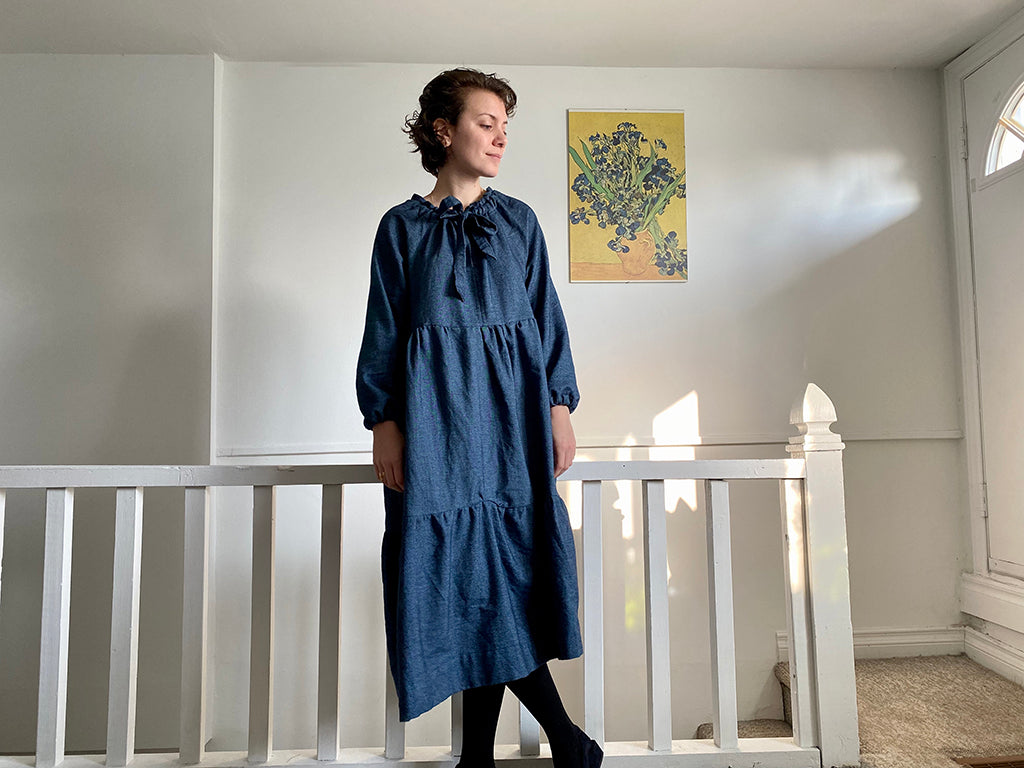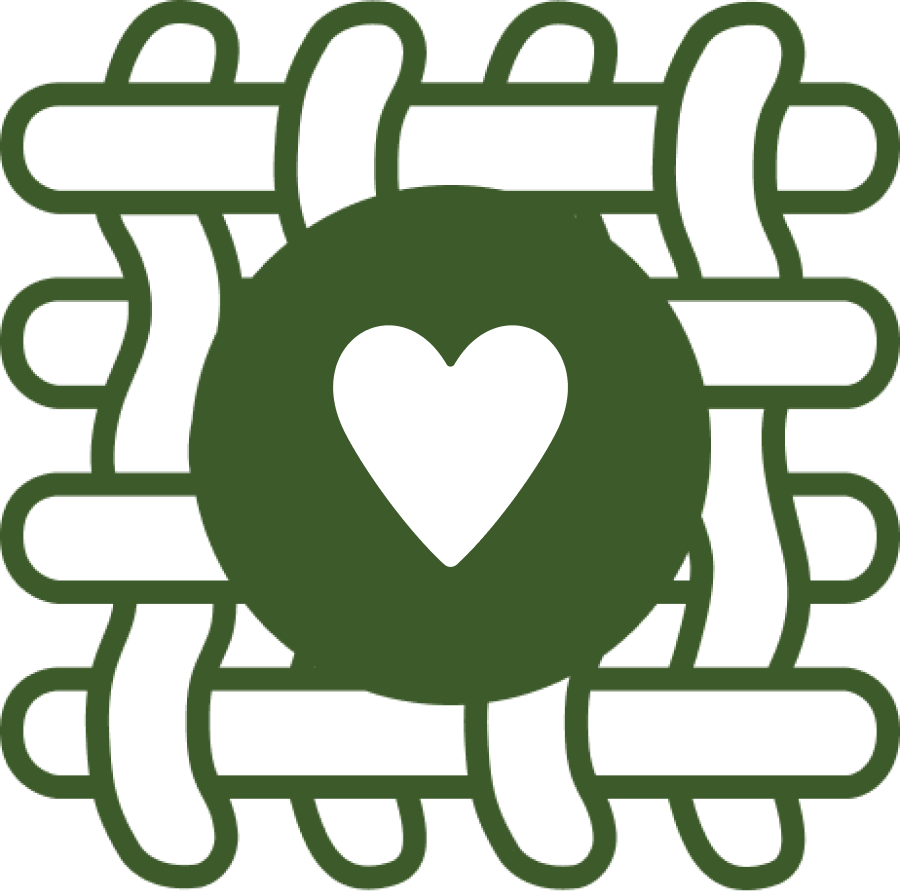Hey folks! I’m Nisan from @the.social.fabric on Instagram, where I share all my garment-making adventures. Today I’m super excited to share with you how I hacked the Ilford Jacket pattern to make myself a big, swooshy detective coat. Read on to get all the details about this project! Buckle up and get your snacks and drinks, it’s gonna be a long one.

I have been wanting to make a cool, oversized trench coat for myself for months and months, and this was the perfect opportunity to finally dive into this project! I started by taking a close look at the Ilford Jacket pattern, and making a list of all the modifications I wanted to make. Here is what my final list looked like, which will give you an idea of the steps we will cover in this blog post:
- Add extra width to the center front for a deeper overlap.
- Add a grown-on facing to the front pieces.
- Draft a back facing.
- Lengthen body pieces.
- Add a center back seam and a vent.
- Split the sleeves into two pieces.
- Switch the patch pockets with welt pockets.
- Add belt loops and a belt.
- Make the collar bigger.
- Add a lining.
Before we dive in, let’s talk sizing. I usually wear a size XS in Friday Pattern Company patterns, but since I wanted this coat to be extra oversized and roomy, I sized up to an M. For the sleeves, I chose the boxy style that comes with the pattern and following my first toile, I decided to shorten the sleeves by 2.5 cm / 1”. Other than these, I made no fit adjustments to the base pattern.
For materials, I used 3 meters of very densely woven cotton (they sold it to me as “trench coat fabric” so I felt like I was using the right materials :D), 2 meters of lining fabric, lightweight interfacing, 5 buttons, and regular all-purpose Gütermann thread as well as heavy-duty Gütermann thread for topstitching.
Alright, let’s talk modifications to the pattern pieces!
Step 1: Adding extra width to the center front
I started by removing all the seam allowances from the center front of the jacket. I then drew a straight line parallel to the center front, 2.5 cm / 1” away from it. I extended the neckline to meet this line, and the deeper overlap was achieved. This gave my coat a slight double breasted look, so if you want to avoid that, simply skip this step.
Step 2: Adding a grown-on facing to the front
Next, I worked on drafting a grown-on or cut-on facing to my new front piece. I wanted the facing to be 10 cm / 4” deep (including seam allowance), so I started by marking points 10 cm away from the neckline, as well as drawing another straight line parallel to my new center front. I connected this line with the points, and had the facing ready.
Step 3: Adding a facing to the back neckline
Since I made the front facing 10 cm deep, I also made the back facing the same width. I simply marked points 10 cm away from the neckline, and connected them to get my finished facing shape. I traced it off my back piece using some tracing paper, and cut it out.
Step 4: Adding length to the body
I wanted the coat to reach my mid-calves, so I added 53 cm / 20 ½” to the hems of the front and back pieces of the shorter view. This includes a 7 cm / 2 ¾” hem allowance.
Step 5: Adding a center back seam & vent
I wanted to add a vent to the center back, so I added a seam going down the center back of the jacket. To do so, I just added 1.5 cm / ⅝” seam allowance to the center back of the pattern piece.
For the vent, I measured 45 cm / 17 ½” up from the hem and marked a straight line perpendicular to the center back seam. I drew a straight line parallel to the center back seam 7 cm / 2 ¾”away from it. This formed a 45 x 7 cm / 17 ½ x 2 ¾” rectangle jetting out of the bottom of the center back seam.
Step 6: Sleeves
For the sleeves, I began with the boxy view and shortened them by 2.5 cm / 1”. I found where the shoulder seam lands on the top of the sleeve, and marked a straight line connecting the shoulder point to the hem of the sleeve. This line should be perpendicular to the hem, following the grainline. I cut my sleeve piece in two along this line, and added 1.5 cm / ⅝” seam allowance to both pieces.
I wanted to add a rectangular strap piece to the back of the wrist to slightly cinch in the wrist. I wanted my finished strap to be 5 cm / 2” wide and shorter than the distance between the new seam I created in the shoulder and the in seam, so I cut two pieces that measured 12 cm / 4 ¾” by 13 cm / 5 ⅛”. The longer you make the straps, the less gathered the back of your sleeves will look.
Step 7: Welt pockets
I went for two slanted welt pockets on the front instead of the many patch pocket options that come with the Ilford. I simply marked on my toile where I think the pockets should sit, and prepared my pieces for my preferred construction method. My pocket opening is 15 cm / 6” and I wanted my welts to be 4 cm / 1 ½” wide, so my welt piece measures 10 cm / 4” by 17 cm / 6 ¾” including seam allowance. I also cut two large rectangular pieces which would later become the pocket bags.
Step 8: Belt loops & belt
This is a simple one, I just cut a long rectangular piece that was double the width I wanted for my belt, plus seam allowance. The piece I cut measures 12 cm / 4 ¾” by 150cm / 59”. For the belt loops, I cut a 4 cm / 1 ½” by 24 cm / 9 ½” rectangle. This gave me two 12 cm / 4 ¾” long and 1 cm / ⅜” wide belt loops.
Step 9: Making the collar bigger
Look, I have a thing for big collars, and I simply couldn’t pass up the opportunity to make this collar more dramatic! I simply added 2 cm / ¾” to the top of the existing collar, making it taller.
Step 10: The lining
I won’t go into too much detail for this step, as it could be a post of its own with how many little details are involved, but here are the basics of what I did: I subtracted the facing pieces from my front and back pieces, and added seam allowance to what was left. For the back lining piece, I added a 2.5 cm / 1” pleat and the top of the center back to allow for ease of movement. I also shortened the sleeve pieces and the body pieces by 1 cm / ⅜”. I still have lots of learning to do on linings, and I have a rather experimental approach to drafting and installing them, so take my advice on linings with a grain of salt :D

Construction:
Now that all our pieces are ready, let’s talk construction!
I interfaced the facing portion of the front, as well as the top collar and half of the welt pieces. You might also want to interface the hem and vent sections of your body pieces, but my fabric didn’t require it.
I started by getting all my smaller pieces ready: the collar, welts, sleeve straps, belt loops and belt. All of these pieces got a double line of topstitching around them, one 2 mm away from the edge, and another one 6 mm away from the first line.

Next, I prepared my front and back pieces. This meant constructing the welt pockets on the front, and sewing the center back seam and the vent on the back. With the front and back ready, I sewed them together with the right sides facing on the shoulders.
Time to tackle the facing: I started by pressing the front facing in along the fold line to make the next steps easier. Next, I sewed the back facing to the front facing pieces along the shoulders, forming a big, enclosed, circle. I then pinned my collar piece to the neckline of the body, matching notches. The under-collar should be touching the right side of the body pieces. I basted it in place by machine, just within the seam allowance. I then folded the facing pieces back onto the body, right sides touching. I sewed all along the neckline, sandwiching the collar between the body and the facing pieces. I clipped and trimmed the curved area, and turned it right side out. I gave it a good press and look! We have our neckline finished in one big move!

For the sleeves, I started by marking where I wanted my strap pieces to sit. I decided to place them 5 cm / 2” up from the hem of the sleeves, so I marked this spot on all 4 of my sleeve pieces. Next, I placed my front sleeve right side up, put the sleeve strap on it right side down, and the back sleeve on top, again right side down. I sewed the front and back sleeves together, with the strap sandwiched in between the two. Now the sleeves are one piece again, and they are ready to be sewn to the body using the Ilford Jacket instructions.

With the sleeves in place, the sleeve inseams and sides seams are also ready to be sewn up. I just made sure to trap the other short edge of the sleeve strap into the sleeve inseam, at the designated height.

I sewed the belt loops to the side seams at the level of my natural waist, and with that, the shell of the jacket was nearly done!
From here on, I simply constructed the lining, sewed it to the shell (first along the edges of the facings, then the hems of the sleeves, and finally at the hem, leaving the vents open so I could bag it out) and played around with button placement. I sewed a buttonhole to the top of the neckline, but got super indecisive about the placement of the rest of the buttons, so I sewed the buttons on the right hand side of the body to see how I feel about them before committing to scary scary buttonholes! I’ll wear it out a couple of times to see if I’m happy with the placement and then turn them into functional buttons.



But yeah! That’s it on how I made my Ilford Jacket: Detective Coat Edition! I love the clean lines it has, and I love how it looks belted and cinched at the waist. As a bonus, we discovered that it looks bomb on my partner, so I have a feeling it will be stolen from my wardrobe pretty soon! For reference his chest measures 100 cm / 39 ³/₈” so this is a size down from what he would wear usually. Just goes to prove how versatile the Ilford is, it looks great on so many bodies!








Leave a comment
This site is protected by hCaptcha and the hCaptcha Privacy Policy and Terms of Service apply.